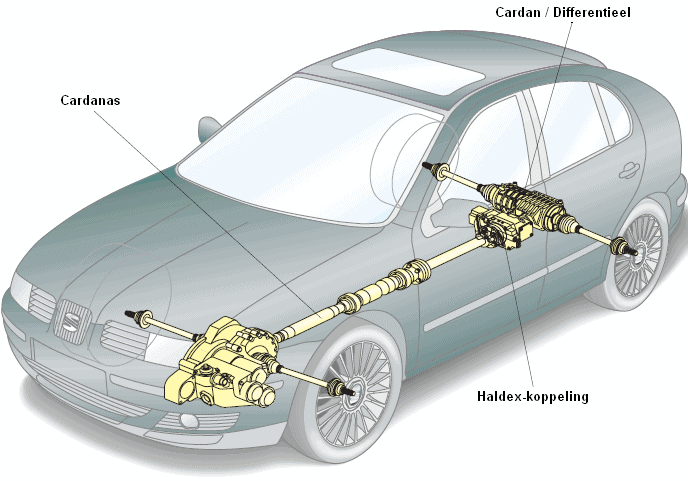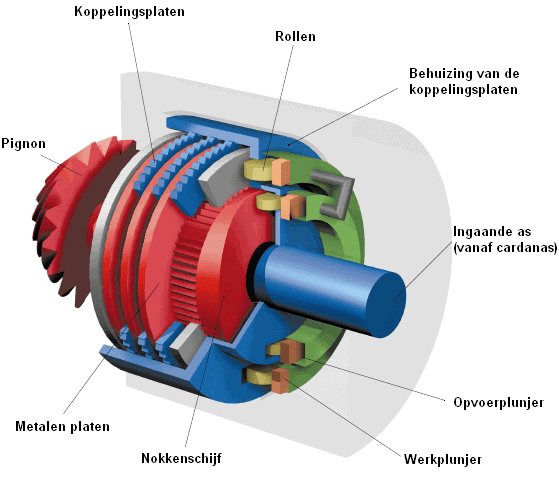Subjects:
- General
- Operation of the Haldex coupling
- Hydraulic circuit
- Oil
General:
A Haldex coupling is a hydraulic coupling that is electronically controlled and transmits mechanical forces. A Haldex clutch is fitted on four-wheel drive cars (such as Audi's Quattro and VW/Seat/Skoda's 4-motion) and sits between the cardan shaft and the cardan (the differential).
With these four-wheel drive systems, the front wheels are constantly driven, just like a front-wheel drive car. The rear wheels are only driven when accelerating or when the front wheels skid (eg due to a soft surface or a lot of engine power). Only in these situations is there four-wheel drive. Because the rear wheels are not driven at constant speed, this system with a Haldex clutch is more fuel efficient than a permanent four-wheel drive system.

Operation of the Haldex coupling:
Torque is transferred to the Haldex coupling from the input shaft (the blue shaft in the figure below). The pinion drives the differential. When driving straight ahead, the speed of the input (blue) shaft and the output shaft (the red) pinion is the same, because the front and rear wheels rotate at the same speed. There is then still a question of driving the rear wheels, because the clutch plates of the Haldex then do not rest against each other. When the input and output shafts have a speed difference, e.g. when the front wheels spin and the rear wheels just roll over the road surface, the (yellow) rollers in the booster plunger (see picture below) ensure that the clutch plates are mechanically pressed against each other. When twisting, the rollers end up in a narrowing of the cam disc, so that the gray ring is pressed more inwards.
The image also shows that the cam disc has a thickening. When this bulge is at the top, it presses the gray ring against the blue clutch plates.

Hydraulic circuit:
There is also a hydraulic system connected to it, which also builds up a certain pressure when uncoupled. This is the boost pressure. This pressure ensures that there is no play on the lifting and working plunger of the Haldex coupling.
The hydraulic system pump is controlled by a control unit. This controls the delivery pressure and the working pressure. At maximum working pressure, the clutch plates are pressed together. Also, by controlling the pressure relief valves, less pressure can be admitted to the clutch, so that the clutch plates have some slip. In this way not all power is allowed to the rear wheels.
Oil:
The Haldex coupling contains special oil which must be changed periodically. If this is not done, as with the engine oil in the engine, additional wear will occur. The total amount of oil in a Haldex coupling is often less than 1 litre, sometimes even less than half a litre.
A BMW does not have a Haldex clutch on four-wheel drive cars, but a transfer case that is mounted on the gearbox. This is described on a separate page. Click here for more information about the BMW transfer case.
